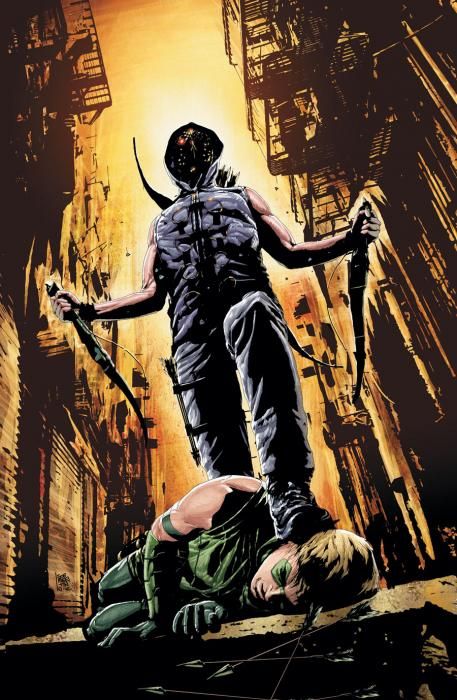Written by Jeff Lemire and drawn by Andrea Sorrentino "Green Arrow" #18 opens with Oliver Queen trekking across Black Mesa, Arizona under an oppressive sun, interspersed with flashback scenes from Ollie's formative years. The flashbacks are spot-colored and the present day is full-color, delivering uncommonly striking contrast between then and now.
That spot-color method is not reserved for flashbacks, however, as colorist Marcelo Maiolo applies it throughout the story, helping to emphasize areas of focus. Maiolo doesn't shade those callouts and doesn't overwhelm those panels with more than one heavily saturated tone. Andrea Sorrentino's heavily-shadowed, photo-influenced art greatly benefits from such dynamic coloring which plays as much a part in storytelling as the panel construction from Sorrentino. "Green Arrow" has the most distinct appearance of any of DC's titles now, thanks to this combination.
A quarter of the way into this issue, Lemire has set up Green Arrow's dilemma and showcases a firm grasp on the DC Universe by directly addressing the interconnectivity Queen has with the hero placing a call to Steve Trevor. Reference is made to the newly minted Justice League of America and Lemire exhibits a firm grasp on Trevor's personality from his experience using the character in issues of "Justice League Dark."
Lemire also gives readers quite a bit on his new villain, Komodo. It's almost too much about Komodo as we see his base of operations, meet his daughter, see him at his "day job" and are given both his name and his face. What we don't know, however, is why he has a beef with Oliver Queen. In preserving that mystery, Lemire adds a level of intrigue that is multiplied by the Magus character who pops in and out of the story. Magus who presents Green Arrow with a moment that reminded me of the turning point in Lion King when Rafiki bonks Simba over the head with his medicine stick.
"Green Arrow" #18 is an incredibly dense comic book. Lemire packs a phenomenal, bordering on overwhelming, amount of information into twenty pages. In addition to the general motion of the story, Lemire introduces Fyff, an assistant of sorts for Arrow, and provides an analysis on Arrow's quiver. "Green Arrow" #18, like the issue before it, is about as far removed from the previous seventeen issues (including #0) as any series could be without completely rebooting. The use of spot color to highlight areas of the story is a brilliant device that separates this book visually and combines nicely with Lemire's story to make Green Arrow yet another interesting archer on today's comic racks.

